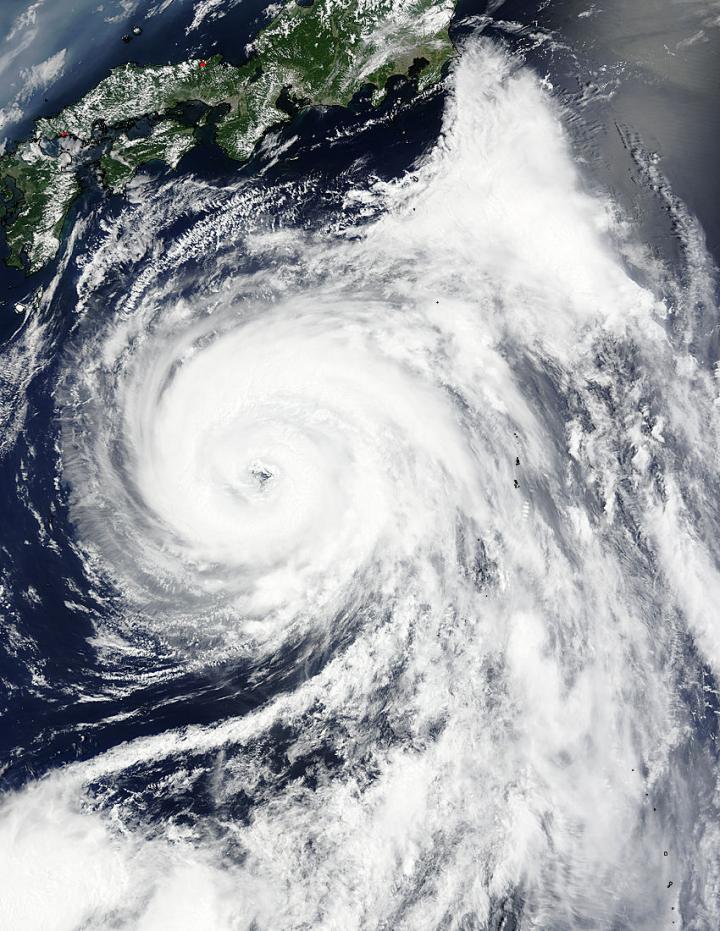NASA sees a ragged eye in Typhoon Nangka

NASA's Terra satellite captured this visible image of Typhoon Nangka nearing Japan on July 15 at 01:25 UTC (July 14 at 9:25 p.m. EDT). Credits: NASA Goddard MODIS Rapid Response Team
The Moderate Resolution Imaging Spectroradiometer or MODIS instrument aboard NASA's Terra satellite captured a visible image of Typhoon Nangka nearing Japan on July 15 at 01:25 UTC (July 14 at 9:25 p.m. EDT).
The image showed a ragged 15-nautical-mile-wide eye surrounded by thick bands of powerful thunderstorms.
At 1500 UTC (11 a.m. EDT), Nangka's maximum sustained winds were near 80 knots (92.0 mph/148.2 kph).
It was centered near 29.3 North and 135.4 East about 375 nautical miles (431.5 miles/694 km) south-southeast of Iwakuni, Japan. Nangka has tracked north-northwestward at 13 knots (15 mph/24 kph).
For warnings and watches from the Japan Meteorological Agency, visit: http://www.
The Joint Typhoon Warning Center forecast calls for Nangka to weaken and track north-northwestward to northwestward toward Japan.
Media Contact
All latest news from the category: Earth Sciences
Earth Sciences (also referred to as Geosciences), which deals with basic issues surrounding our planet, plays a vital role in the area of energy and raw materials supply.
Earth Sciences comprises subjects such as geology, geography, geological informatics, paleontology, mineralogy, petrography, crystallography, geophysics, geodesy, glaciology, cartography, photogrammetry, meteorology and seismology, early-warning systems, earthquake research and polar research.
Newest articles

“Nanostitches” enable lighter and tougher composite materials
In research that may lead to next-generation airplanes and spacecraft, MIT engineers used carbon nanotubes to prevent cracking in multilayered composites. To save on fuel and reduce aircraft emissions, engineers…

Trash to treasure
Researchers turn metal waste into catalyst for hydrogen. Scientists have found a way to transform metal waste into a highly efficient catalyst to make hydrogen from water, a discovery that…

Real-time detection of infectious disease viruses
… by searching for molecular fingerprinting. A research team consisting of Professor Kyoung-Duck Park and Taeyoung Moon and Huitae Joo, PhD candidates, from the Department of Physics at Pohang University…




















